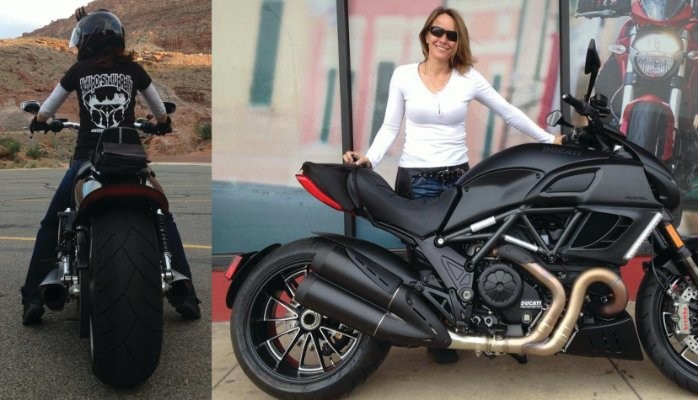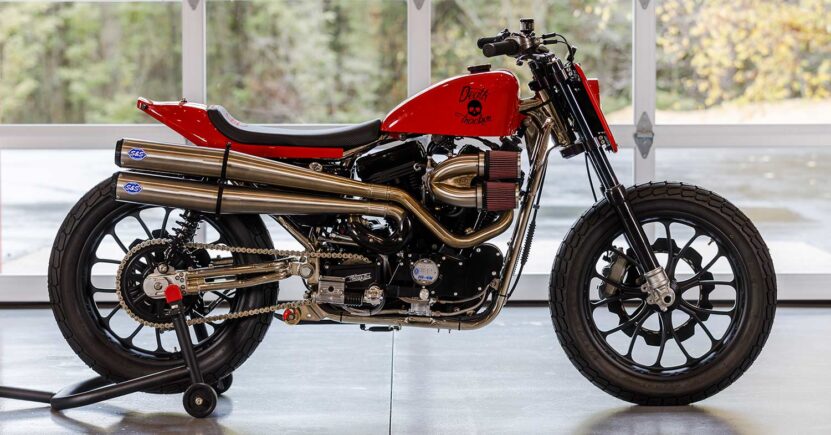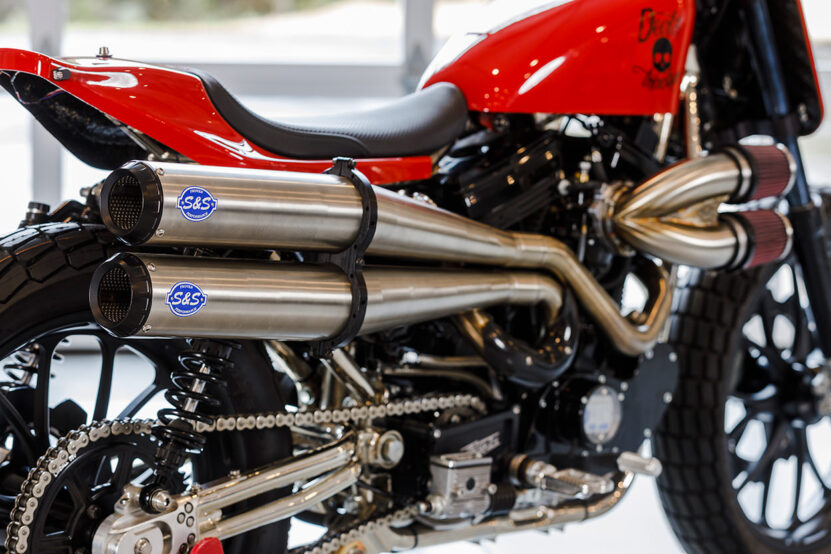When it comes to iconic American motorcycles, Harley-Davidson’s reputation roars as loudly as its engines. Founded in 1903, Harley has not only survived but thrived, navigating through the Great Depression to become a dominant force in the motorcycle industry. It’s no wonder that bike enthusiasts often find themselves comparing other models to Harley’s legendary machines.
The 2021 Harley-Davidson Sportster S and the 2021 Indian Scout are prime examples of top-tier bikes that command attention on the road. With their distinctive styling and robust performance, choosing between them can be a true conundrum for riders. I’m diving into the nitty-gritty of what sets these two apart, so you can rev up your knowledge and make an informed decision.
Performance Comparison

When putting the 2021 Harley-Davidson Sportster S head-to-head with the 2021 Indian Scout, it’s clear that both bikes have something special under the hood. I’m talking about their liquid-cooled 60-degree V-Twins, a departure from their air-cooled ancestors, pumping out the power we’ve all come to love. But as any seasoned rider knows, glory isn’t given solely to the swift. Handling plays a critical role, and that’s where both bikes shine, though in subtly different ways.
The Sportster S leverages a 43 mm inverted front end with a triplerate spring and a preload-adjustable coil-over monoshock. Indian isn’t left in the dust, though – they’ve got a pair of Fox piggyback shocks and a 43mm USD front end from KYB. These setups result in the Sportster S offering 4.4 inches of rear wheel travel, while the Scout boasts 4 inches. At the front, they’re neck and neck, both featuring 5.1 inches of wheel travel.
On paper, the differences seem marginal. But it’s the subtleties in engineering that make or break the riding experience. Harley’s pride and joy brandishes a 28-degree rake, a 31.3-degree lean angle, and a 63.6-inch wheelbase, focusing on agility. Conversely, Indian maintains stability with a 29-degree rake, a 29.5-degree lean angle, and a 64.6-inch wheelbase.
Design and Styling
When I hone in on the design and styling differences, the 2021 Harley-Davidson Sportster S elevates the traditional cruiser stance with a modern twist that’s sure to draw attention. The bike boasts a muscular frame with a bold, beefy appearance, further accentuated by a pair of copper-tipped stacked exhaust tips. These aren’t just for show; their unique angle significantly improves the bike’s road performance. Adding to this fierce design is a set of thick tires, a front chopped mudguard, and a streamlined display gauge, all of which reinforce the Sportster S’s aggressive aesthetics.
In contrast, the 2021 Indian Scout showcases a mix of classic and contemporary with its iconic fuel tank arch and block lettering on the logo. The exhaust tips here are finished in simplistic black, stretching horizontally towards the back. The Scout’s design includes tightly cropped wheel guards and a triangular-shaped seat, further lending to its minimalist and refined style.
Ergonomics play a significant role in rider experience, and that’s where dimensions and stance come into play. The Indian Scout, with its long-and-low profile, forward-set foot controls, and minimal pullback to the handlebars, positions the rider in a classic clamshell seat. While aesthetically pleasing, this design can prioritize style over comfort, especially for taller riders. It’s the lowest ride among its competitors, which unfortunately translates to less cornering clearance. During tight turns, the bottom of the lower exhaust pipe can scrape, marring the finish with raw metal scarring.
The Sportster S, on the other hand, steps up with a color TFT display that’s both functional and sophisticated. The large tachometer and speed readout are not only helpful but also enhance the bike’s modern tech vibe. Riders seeking a more contemporary feel will appreciate the blend of traditional cruiser elements with these advanced features.
Meanwhile, the newly unveiled 2024 Sport Chief by Indian Motorcycle has started to challenge Harley-Davidson’s stronghold in the club-style cruiser market. It reflects a combination of the style elements from their rivals matched with Indian’s signature design features.
Engine and Power

When it comes to engine performance and sheer power, the names S&S Cycle and Harley-Davidson often stir up significant excitement. S&S Cycle specializes in high-performance engines catering to a wide range of riding preferences and requirements. Their offerings range from the large and bold to the smaller yet potent power plants, ensuring there’s something for every type of rider. My own experience with these engines speaks volumes about their commitment to longevity with minimal vibration.
With S&S Cycle’s focus on high-performance parts (you can purchase them from Parts Giant) since teaming up in 1953, it’s no surprise that they’ve maintained such high demand, especially for V-Twin bikes. It’s remarkable to recognize that the same commitment to quality from decades ago persists under the leadership of their current president, Paul Skarie. Riders who prioritize a balance between aesthetic appeal and the need for speed often turn to S&S for their engine needs. The key is to choose an engine that not only fits the look of your motorcycle but also provides the thrilling experience you’re after.
Harley-Davidson’s own Dyna Low Rider S stands out with its multiplate clutch featuring a diaphragm spring housed in an oil bath, which delivers exceptionally smooth gear shifting. The bike is powered by the Screamin’ Eagle Twin Cam 110 engine, rubber-mounted to help minimize those unwanted vibrations. With an 1801 cc engine capacity, power delivery is as smooth as it is robust. I’ve particularly noticed how responsive the Harley Dyna Low Rider S is to throttle inputs, with rapid acceleration across different gear levels.
Challenges can arise, however, especially when riding in traffic where frequent braking may cause the engine to heat up more quickly than is ideal. Yet, it’s this very responsiveness under various conditions that sets the Dyna Low Rider S apart. For those looking to further enhance their ride, an engine upgrade kit and an aftermarket two-into-one exhaust can take the bike’s performance to even greater heights – potentially surpassing the capabilities of the Softail Low Rider S.
The rapid growth of S&S Cycle meant they quickly outgrew their original setting—a family farmhouse that amazingly continues to serve as part of their research and innovation hub. This history of expansion and dedication to quality components is integral to understanding the impact S&S Cycle has made on the motorcycle industry. Riding an S&S engine-equipped bike, I’ve come to appreciate this legacy with every mile.
Features and Technology
In the world of motorcycle engineering, the devil’s in the details, and features and technology are what set the leaders apart. I’ve got a keen eye on the latest offerings from S&S and Harley-Davidson, and it’s clear that both brands are delivering cutting-edge,such as innovative motorcycle windshields, designed to enhance the rider’s experience.
Starting with Harley-Davidson, their 2017 Dyna Low Rider S and 2022 Softail Low Rider S are standouts. They’ve integrated an array of tech features aimed at improving both performance and comfort. One such feature is the Handlebar-Mounted Gauges, which provide easy access to vital information without cluttering the rider’s field of view. ABS, which is optional on the earlier model, became standard by 2022, reflecting Harley’s commitment to safety through technological enhancements. Plus, Cruise Control is now a standard fare, a nod to the touring aficionados looking for that extra convenience on long rides.
The convenience of digital instrumentation—Digital Speedometer, Tachometer, Fuel Gauge, Tripmeter, Clock, and Odometer—is now ubiquitous on Harley-Davidson models. These digital readouts ensure riders have clear, concise information at a glance, streamlining the interface between man and machine.
Turning to S&S Cycle, their innovative approach has equally reshaped expectations in the aftermarket sphere. The Two-Year Warranty on products like the alternator-generator-style Panhead engine is a clear sign of their quality assurance. And let’s talk about power: with options such as the 124in Twin Cam A Engine, S&S Cycle isn’t just in the game; they’re changing it. With features like a 640 Gear Drive Easy Start Cam and 10.8:1 Forged Pistons, riders can expect a surge of power that’s both thrilling and reliable.
What’s equally impressive is the compatibility S&S offers. Their T-Series engines, for instance, are designed for 1999-06 big twins and come without fuel or ignition systems, so you can repurpose your existing performance upgrades.
Pricing and Value

When considering your next motorcycle upgrade or replacement engine, it’s important to weigh the costs against the value you’re receiving. Harley-Davidson’s latest models, like the 2024 Low Rider S, can come with a pretty hefty price tag. With MSRP starting at $19,999, and financing options available to those with high credit scores, you’re looking at potential monthly payments of approximately $315.24 for 84 months under specific terms. While this includes the peace of mind of manufacturer’s support and brand prestige, I always advise riders to crunch the numbers carefully before signing on the dotted line.
In contrast, for those looking to replace or upgrade an engine in their current Harley, options from S&S Cycle offer not only affordability but also a noticeable boost in performance. For example, S&S Cycle’s V111T engine, designed to enhance torque, promises up to 50% more horsepower and a 40% increase in torque. This is a boon for riders who demand smooth, quiet power on their long journeys or want that extra grunt when hauling heavy loads.
Performance enhancements often lead to better overall value, as engines like the S&S V111T upgrade are engineered to minimize noise and vibration—a long-term benefit that can save you in maintenance and add to the riding pleasure. Investing in these engines could be a savvy move, ensuring you get a more powerful ride without breaking the bank.
The true value, then, isn’t just in the initial purchase price but in the long-term investment. Riders need to factor in not only the upfront costs but also the potential savings in fuel efficiency, reduced maintenance, and increased longevity of their motorcycle. When it’s all summed up, value takes on a new meaning beyond the sticker price—it encapsulates the joy of riding, the reliability of your machine, and the confidence in your purchases.
Conclusion
Deciding between a Harley-Davidson and upgrading with S&S Cycle parts boils down to personal preference and priorities. If you’re after a brand-new bike with that iconic status, Harley’s latest offerings are tempting. But for those looking to get more bang for their buck, S&S Cycle’s performance upgrades can transform your current ride without breaking the bank. Remember, the true worth of a motorcycle isn’t just in its price tag—it’s in the joy of the ride and the reliability it offers mile after mile. Whatever choice you make, ensure it aligns with your passion for the road and your desire for a machine that stands the test of time.
